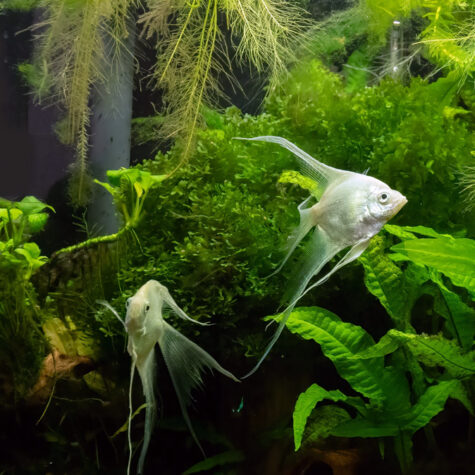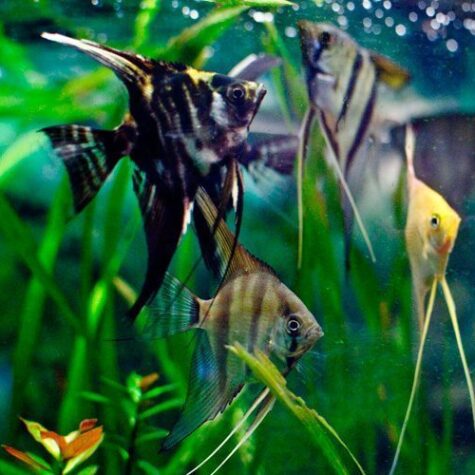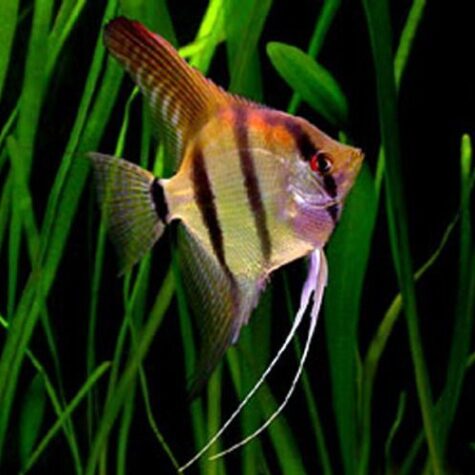$22.00
*NOTE: AS A FISH FARM, WE DO NOT OFFER GENDER SPECIFIC SEXING ON FISH STOCK. REQUEST FOR MALES OR FEMALES CAN ONLY BE ACCOMMODATED IF THE ITEM SPECIFIES GENDER IN THE DESCRIPTION SUCH AS: MALE BETTA, FEMALE GUPPY, ETC SORRY FOR ANY INCONVENIENCE.
Natural Wild Angelfish
Pterophyllum Scalare
With a natural Wild Angelfish, this variety is as virgin as they come. Usually a silver to bronze cast body with soft vertical bar striping is the common coloration.
Collection of wild angelfish have created the theory that all or some wild types of Angels (including Pterophyllum altum) are prone to interbreeding in the wild. This is not very likely, but its is currently being studied by a few scientists. There is the possibility that flooding of South American fish wholesale operations, released some angelfish into waters they are not normally found in. This may have resulted in some hybridization. Hopefully, some new evidence will clear this up. Regardless of what occurs in the wild, interbreeding of Pterophyllum species in captivity was, and is a definite probability.
Our domestic strains of Angelfish are the result of many decades of selective breeding. For the most part, the original crosses of wild angelfish were unrecorded and those that were tracked, were most certainly done by people who didn’t know the difference between the angelfish species. This makes the origins of our domestic angelfish totally unclear. Domestic strains of Angelfish are most likely a collection of genes resulting from more than one species of wild angelfish combined with the selection of mutations in domesticated lines over the last 60 or more years. All this results in creating a domestic angelfish that is a true hybrid with little more than a superficial resemblance to wild Pterophyllum species. It is strictly a man-made ornamental fish that is not meant to be re-introduced to the wild.
Diet: A variety of foods including meaty foods, like bloodworms. Angels will eat algae if they run out food, so overfeeding is not encouraged! If you go on vacation for a week or so, leave them alone, they’ll find things in your tank to eat such as microorganisms. Algae will be one of the first things they eat.




